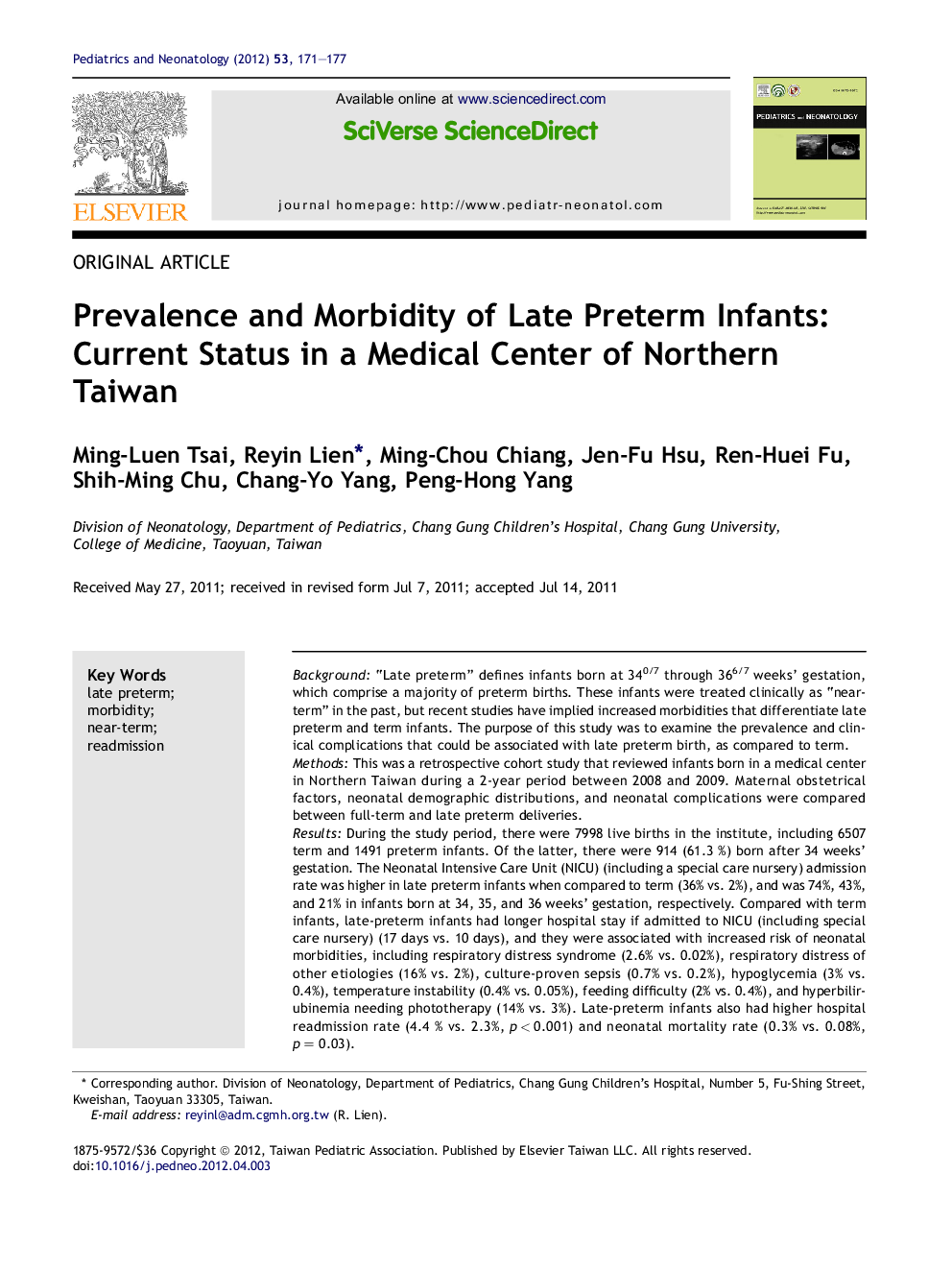| کد مقاله | کد نشریه | سال انتشار | مقاله انگلیسی | نسخه تمام متن |
|---|---|---|---|---|
| 4175287 | 1276181 | 2012 | 7 صفحه PDF | دانلود رایگان |

Background“Late preterm” defines infants born at 340/7 through 366/7 weeks' gestation, which comprise a majority of preterm births. These infants were treated clinically as “near-term” in the past, but recent studies have implied increased morbidities that differentiate late preterm and term infants. The purpose of this study was to examine the prevalence and clinical complications that could be associated with late preterm birth, as compared to term.MethodsThis was a retrospective cohort study that reviewed infants born in a medical center in Northern Taiwan during a 2-year period between 2008 and 2009. Maternal obstetrical factors, neonatal demographic distributions, and neonatal complications were compared between full-term and late preterm deliveries.ResultsDuring the study period, there were 7998 live births in the institute, including 6507 term and 1491 preterm infants. Of the latter, there were 914 (61.3 %) born after 34 weeks' gestation. The Neonatal Intensive Care Unit (NICU) (including a special care nursery) admission rate was higher in late preterm infants when compared to term (36% vs. 2%), and was 74%, 43%, and 21% in infants born at 34, 35, and 36 weeks' gestation, respectively. Compared with term infants, late-preterm infants had longer hospital stay if admitted to NICU (including special care nursery) (17 days vs. 10 days), and they were associated with increased risk of neonatal morbidities, including respiratory distress syndrome (2.6% vs. 0.02%), respiratory distress of other etiologies (16% vs. 2%), culture-proven sepsis (0.7% vs. 0.2%), hypoglycemia (3% vs. 0.4%), temperature instability (0.4% vs. 0.05%), feeding difficulty (2% vs. 0.4%), and hyperbilirubinemia needing phototherapy (14% vs. 3%). Late-preterm infants also had higher hospital readmission rate (4.4 % vs. 2.3%, p < 0.001) and neonatal mortality rate (0.3% vs. 0.08%, p = 0.03).ConclusionLate-preterm infants have increased risk of neonatal morbidities associated with organ immaturity. The results of this study emphasize the importance of judicious obstetrical decision-making when considering late preterm delivery, and the need to set up anticipatory clinical guidelines for the care of late preterm infants.
Journal: Pediatrics & Neonatology - Volume 53, Issue 3, June 2012, Pages 171–177